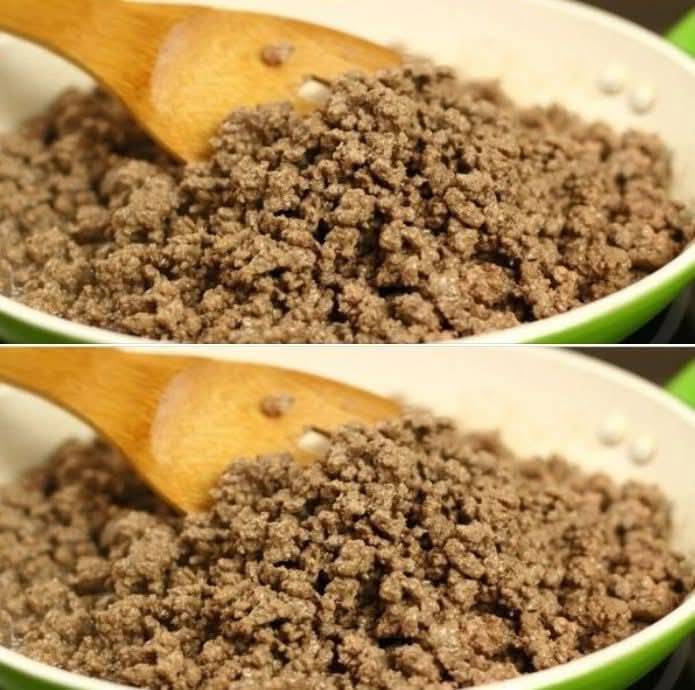ADVERTISEMENT
**Should You Rinse Ground Beef? An In-Depth Exploration**
When preparing ground beef for cooking, the question often arises: **should you rinse ground beef** before cooking it? This seemingly simple question can spark heated debates among chefs, home cooks, and food enthusiasts. While rinsing meat is a common practice for some types of meat (like poultry), ground beef presents a unique set of considerations. In this article, we will take a deep dive into the topic of rinsing ground beef, looking at both sides of the debate, examining food safety concerns, and considering how rinsing may affect flavor, texture, and cooking techniques. We will also explore alternative methods for preparing ground beef that can yield the best results based on your specific needs.
Whether you’re preparing a classic beef taco filling, a comforting chili, or a hearty meatloaf, understanding the pros and cons of rinsing ground beef is crucial. By the end of this article, you’ll have a well-rounded perspective on the subject and be better equipped to make an informed decision the next time you’re in the kitchen.
—
## **The Basics of Ground Beef**
Before diving into the question of rinsing, it’s important to understand what ground beef is and how it’s typically used in cooking.
### **What is Ground Beef?**
Ground beef, also known as minced beef, is meat that has been finely chopped using a meat grinder or food processor. It is made from beef cuts, including chuck, sirloin, and round, which are less expensive than premium cuts like tenderloin or ribeye. Because of its affordability and versatility, ground beef is one of the most commonly used meats in cooking across the globe.
Ground beef comes in a range of fat content percentages, from lean to extra fatty, which can affect both its flavor and texture. The most common types of ground beef you’ll find in stores are:
– **Lean Ground Beef (90-95% lean)**: This type has less fat and is typically used in recipes where the texture needs to be firm, such as for burgers or meatballs.
– **Regular Ground Beef (70-85% lean)**: This type has a higher fat content, which makes it juicier and richer. It’s often used in dishes like chili, casseroles, and tacos.
The fat content is important because it impacts the overall taste and texture of the dish you’re preparing. It’s also essential to note that when you cook ground beef, the fat content will release, which may cause excess grease to accumulate in the pan, especially if the beef is high in fat.
—
## **The Argument for Rinsing Ground Beef**
The debate about rinsing ground beef typically stems from concerns about excess grease and fat. The idea of rinsing ground beef before cooking it is based on the notion that doing so will remove some of this grease and reduce the overall fat content of the dish. But, how effective is rinsing in achieving this, and is it a step worth incorporating into your routine?
### **1. Reducing Excess Fat**
One of the most common reasons cited for rinsing ground beef is to reduce the amount of fat in the dish. High-fat ground beef can result in a greasy end product, especially in dishes like spaghetti sauce, casseroles, or tacos, where a large amount of beef is used. Rinsing can be seen as a way to mitigate this greasiness.
#### **How to Rinse Ground Beef:**
If you choose to rinse ground beef, the process typically involves the following steps:
1. **Brown the Ground Beef**: First, you would brown the ground beef in a skillet until it is fully cooked. Drain off as much fat as possible before rinsing.
2. **Rinse Under Hot Water**: After draining the fat, you can transfer the cooked beef into a colander or sieve and rinse it under hot water. This removes additional fat and any remaining grease.
3. **Reheat the Beef**: After rinsing, place the beef back in the pan to reheat, and you’re ready to use it in your recipe.
### **2. Healthier Option**
By removing some of the fat from the meat, rinsing can result in a healthier meal with fewer calories and less saturated fat. If you’re trying to reduce your fat intake, rinsing the beef can help, especially if you’re cooking with fatty cuts like 80/20 ground beef or higher fat percentages.
### **3. Preventing Greasy Sauces**
In certain recipes, such as chili or Bolognese sauce, excess grease can make the sauce too oily, which may alter the texture or taste of the dish. Rinsing the beef after cooking can help you create a smoother, less greasy sauce by removing some of the fat that would otherwise contribute to a greasy consistency.
### **4. Less Mess to Clean Up**
Another argument for rinsing ground beef is the reduction of greasy residue in the pan. After browning the beef, you may notice pools of fat left in the pan. Rinsing the beef can reduce the amount of grease, making the cleanup process easier. It can also prevent the greasy splattering that sometimes occurs during cooking.
For Complete Cooking STEPS Please Head On Over To Next Page Or Open button (>) and don’t forget to SHARE with your Facebook friends
